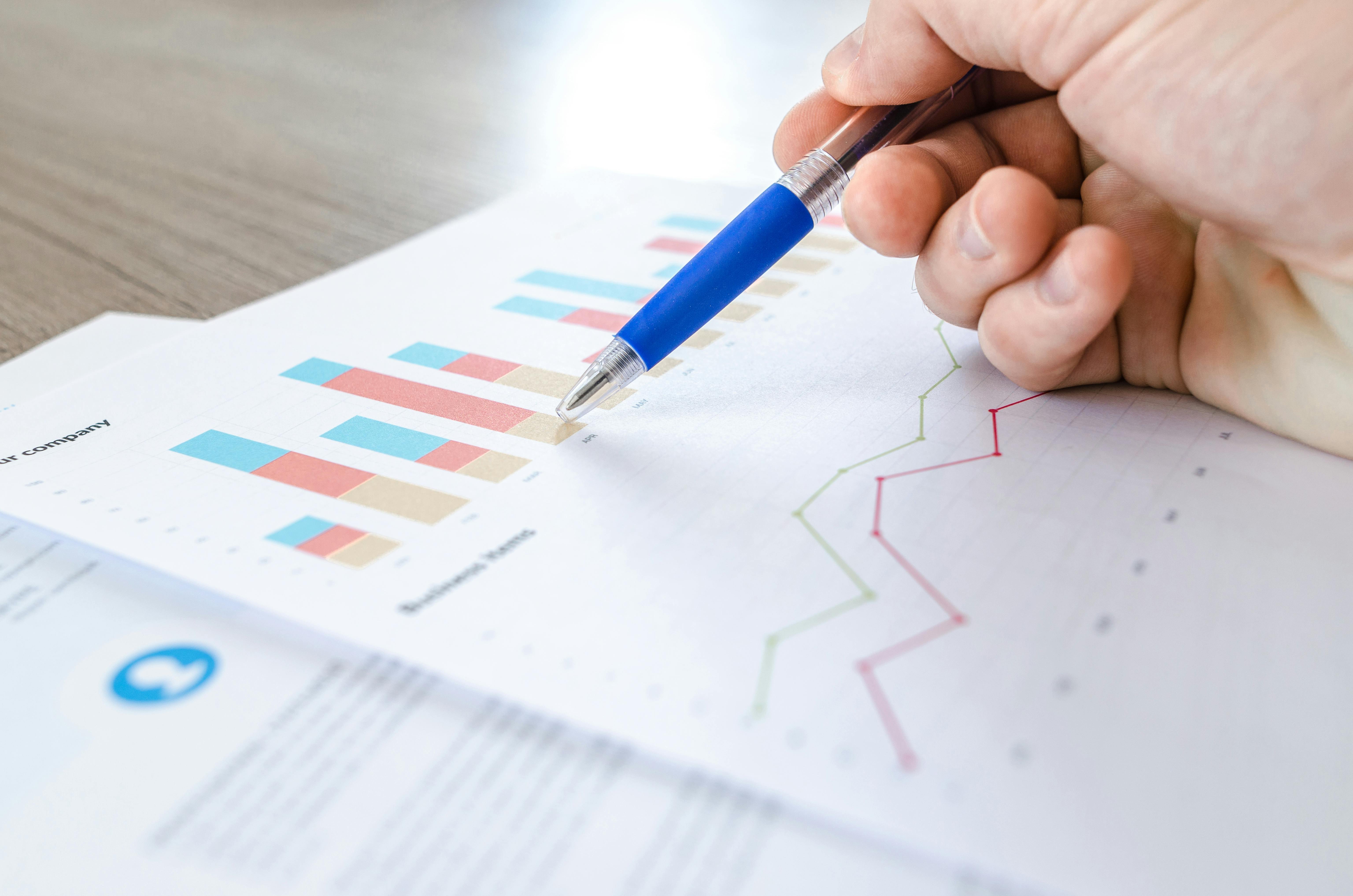
Mastering Sales Funnel Analysis for Business Growth
A sales funnel is one of the most critical frameworks in modern business strategy. Whether you’re running a small e-commerce store or a large enterprise B2B operation, understanding how potential customers move from initial awareness of your product or service to the final purchase decision is vital. This journey, commonly broken into distinct stages, allows companies to visualize and measure their prospects’ progression through each interaction and ultimately uncover what drives conversions and revenue.
Sales funnel analysis involves a thorough examination of these stages, pinpointing exactly where prospects might drop off, and strategizing how to optimize every touchpoint to improve conversion rates. By taking a data-driven approach, businesses can uncover hidden trends, identify areas for improvement, and refine their marketing efforts to resonate more effectively with their target audience.
In this article, we will dive deeply into the concept of sales funnels, from the fundamental stages that guide buyers to the actionable metrics and techniques that can help you maximize performance. By the end, you’ll be better equipped to evaluate your funnel, spot opportunities to enhance customer experience, and substantially boost sales outcomes.
What is a Sales Funnel?

In its simplest form, a sales funnel represents the path a potential customer takes from their first interaction with your brand to the ultimate purchase decision. This path is typically segmented into four foundational stages: Awareness, Interest, Decision, and Action. These stages collectively form a structured flow that visualizes how leads move closer to becoming paying customers. However, in practice, this funnel can have more nuanced sub-stages depending on the complexity of your business model.
Awareness is where potential customers encounter your brand or solution for the first time. This could be through social media ads, search engine results, or even word-of-mouth referrals. In the Interest stage, those who have gained awareness explore your offering further to determine if it aligns with their needs. During Decision, prospects actively evaluate whether or not to purchase, often comparing your product against competitors. Finally, Action marks the actual conversion event—a purchase, subscription, or any transaction that equates to a completed goal for your business.
The real power of the sales funnel lies in its ability to segment large swaths of prospective customers into understandable groups. By outlining specific stages, you create a roadmap for nurturing leads, addressing objections, and tailoring marketing messages to align with customer intent. Each stage signifies an opportunity to educate prospects on the value of your product and guide them seamlessly toward conversion.
Understanding the sales funnel gives you a strategic viewpoint over the customer’s journey. This ensures that your marketing initiatives are well-timed and resonate deeply with the audience’s unique interests and concerns. Instead of attempting a one-size-fits-all approach, you can deploy nuanced tactics that speak to the specific mindset of prospects at each stage.
Ultimately, the sales funnel serves as both a lens and a roadmap: it reveals where potential opportunities may lie and guides how to convert those opportunities into measurable business growth.
The Importance of Sales Funnel Analysis

Simply having a well-defined funnel isn’t enough—analyzing your funnel is paramount to leveraging its true value. Sales funnel analysis provides an in-depth understanding of how effectively your organization is turning leads into paying customers. Through this analysis, businesses can accurately spot areas where prospects lose interest or abandon their journey entirely.
By systematically measuring and interpreting funnel performance, you gain a clearer perspective on customer behavior. Are users dropping off immediately after the awareness stage, suggesting that your first impressions need revamping? Are they making it to the decision stage but failing to convert, hinting at a potential gap in your product’s perceived value or pricing strategy? These insights empower you to optimize different stages of the funnel, from refining your marketing messaging to improving the user experience during checkout.
Over time, these funnel-based improvements can have a cascading effect. Enhanced marketing campaigns ensure that you’re attracting higher-quality leads. Improved nurturing processes and better alignment between marketing and sales can boost conversions in the decision phase. Even small adjustments can lead to significant revenue increases, as a slight uptick in your conversion rate often translates into a substantial impact on overall sales. Moreover, a well-analyzed funnel supports better customer retention by ensuring that every stage offers value, clarity, and a positive brand experience.
In a competitive market, merely “guessing” what works is no longer a viable strategy. Sales funnel analysis helps you adopt a data-centric approach to growth. With accurate data, you can pivot quickly, resourcefully, and effectively, driving sustained improvements and a sharper edge in your chosen industry.
Key Metrics in Sales Funnel Analysis

To get the most value from your sales funnel analysis, it’s crucial to track the right metrics. Each funnel stage generates specific data points that offer insights into how well your strategy is performing and where adjustments might be necessary. Below are some of the most important metrics to monitor:
- Conversion Rate: The percentage of prospects who move from one stage of the funnel to the next. Tracking conversion rates reveals how effective your messaging or offer is at each stage. For instance, if 1,000 people become aware of your product, and 100 express interest, your conversion rate from awareness to interest is 10%.
- Drop-Off Rate: The inverse of the conversion rate, the drop-off rate measures how many prospects fail to advance to the next stage. High drop-off rates can indicate friction points such as complex forms, unclear product benefits, or pricing concerns. Identifying these friction points is often the first step in funnel optimization.
- Average Deal Size: The average monetary value of successful conversions. If you notice a decline in average deal size, it may suggest that although you’re converting prospects, they’re purchasing lower-priced products or spending less overall. Tracking average deal size can help you tailor upsell and cross-sell strategies.
- Sales Cycle Length: The average time it takes for a lead to move from awareness to action. A lengthy sales cycle might mean that your messaging needs to be more persuasive or that your nurturing process lacks efficiency. Shortening the sales cycle can lead to quicker revenue generation and reduced customer acquisition costs.
- Customer Lifetime Value (CLV): While this extends beyond the immediate funnel, understanding the long-term profitability of each customer can provide insights on which segments are most valuable. Combining CLV data with funnel metrics may reveal, for example, that certain channels produce fewer leads overall but more profitable long-term customers.
- Cost Per Acquisition (CPA): This measures the total marketing and sales spend required to acquire a single paying customer. Balancing CPA with revenue per customer is a vital aspect of ensuring that your funnel remains both effective and profitable.
While these metrics are essential to any robust sales funnel analysis, they don’t exist in a vacuum. It’s important to interpret metrics within the broader context of your marketing channels, target audience, and overall business objectives. For instance, a seemingly high drop-off rate in the decision stage might be acceptable if your product requires a longer consideration period due to its complexity or cost.
On the software side, tools like Google Analytics, HubSpot, Salesforce, and specialized business intelligence (BI) platforms can all play a critical role in collecting, organizing, and reporting these metrics. The choice often depends on your organization’s size, budget, and existing tech infrastructure. You might use Google Analytics for web traffic data, while integrating a Customer Relationship Management (CRM) tool like Salesforce for deeper insight into lead qualification and sales interactions.
Ultimately, the goal is to have a 360-degree view of your customer journey, from the moment they click on an ad to the day they decide to purchase—and beyond. By keeping a close eye on these key metrics, you can systematically identify performance gaps and position your funnel for steady, sustainable growth.
Steps to Conduct a Comprehensive Sales Funnel Analysis

Conducting a thorough sales funnel analysis is a multi-stage process that spans data gathering, hypothesis formation, and continuous refinement. Below is a structured approach you can adapt to your unique business needs.
1. Define Objectives and Key Performance Indicators (KPIs)
Start by clarifying your goals for the analysis. Are you aiming to increase conversion rates, reduce drop-offs, or identify your most profitable customer segment? Pinpointing these objectives informs your choice of KPIs, ensuring you measure what matters most to your business. For instance, if your core goal is boosting revenue, average deal size and conversion rates might be among your top KPIs.
2. Gather and Organize Data from Various Sources
Comprehensive analysis demands data from multiple channels, whether web analytics tools, CRM systems, marketing automation platforms, or even offline sources like trade show interactions. Consolidating this data can be a challenge, but modern integration tools and APIs can streamline the process. The goal is to have a unified dataset that covers every funnel stage, allowing you to see how prospects flow from initial contact to final sale.
3. Map Out the Current Sales Funnel and Identify Stages
Visualize your existing funnel. This step often involves creating a diagram or flowchart that delineates each stage—Awareness, Interest, Decision, and Action—along with any micro-stages that might be relevant. Take note of the “entry points” where leads typically discover your brand and the final action you consider a “win,” whether it’s a purchase, subscription, or contract signing. A clear funnel map serves as your blueprint for subsequent analysis.
4. Analyze Data to Identify Trends, Bottlenecks, and Drop-Off Points
With your funnel mapped and your data compiled, focus on trends that stand out. Are you seeing a high drop-off in the interest stage? Do certain marketing channels lead to better conversion rates but fewer overall leads? Look for anomalies—both good and bad—to unravel which parts of your funnel are thriving and which ones need attention. At this point, funnel visualization tools or standard business intelligence dashboards can provide a clearer overview of your data.
5. Develop Hypotheses for Optimization and Improvement
Once you’ve identified potential issues, brainstorm how to resolve them. If your data shows a high number of users abandoning their cart, hypothesize that your checkout process might be too complex, or that your shipping fees aren’t transparent enough. If your drop-off seems to occur right after the awareness stage, consider enhancing the value proposition in your follow-up marketing emails. Formulating these hypotheses sets the stage for strategic changes aimed at boosting funnel performance.
6. Implement Changes and Test Their Impact
Prioritize your hypotheses based on potential impact and ease of implementation. Then, roll out changes in a controlled manner—often using A/B testing or small-scale pilots—to gauge effectiveness. For example, if you suspect that a simplified checkout will reduce cart abandonments, test a new checkout process with a subset of your customers. Compare their behavior to a control group to determine if the change made a significant difference.
7. Continuously Monitor and Refine the Funnel
Sales funnel analysis is not a one-time event; it’s an ongoing cycle of improvement. Even if you’ve identified a solution that boosts conversion rates now, market conditions and customer preferences can shift. Regular monitoring ensures that you catch any dips in performance early. Frequent reviews of your funnel data let you refine your strategies to maintain or improve upon past gains.
By following these steps systematically, you lay a strong foundation for uncovering bottlenecks, optimizing engagement tactics, and ultimately driving more conversions. The process becomes invaluable as it transforms raw data into actionable insights, making sure your marketing spend and sales efforts yield maximum ROI.
Common Challenges in Sales Funnel Analysis and How to Overcome Them

Despite the clear benefits, conducting a thorough sales funnel analysis can present several obstacles. From fragmented data sources to organizational silos, these challenges can impede accurate insights and slow down the optimization process. Here are some of the most common issues and suggestions to address them.
1. Data Accuracy and Completeness
One of the biggest hurdles is ensuring that the data feeding into your funnel analysis is both accurate and comprehensive. If certain stages aren’t adequately tracked—say, offline events or support interactions—then you’re working with an incomplete picture. Overcoming this requires a commitment to robust data governance practices. Define clear data collection methods, standardize reporting, and regularly audit data sources to spot inconsistencies or gaps.
2. Integration Issues Across Platforms
Many businesses rely on a patchwork of tools—CRMs, email marketing platforms, web analytics, and more. Getting them to talk to each other seamlessly can be a technical nightmare, particularly if each system uses different data formats or lacks a reliable API. To handle this, consider implementing an integration platform as a service (iPaaS) or leveraging specialized connectors offered by your CRM. Investing time in a well-planned integration effort will pay off in the form of clean, unified data that’s easier to analyze.
3. Organizational Silos
Even if you have flawless data integration, different departments may still be reluctant to share their insights or collaborate on funnel improvements. Sales might blame marketing for poor lead quality, while marketing could point to sales for mishandling qualified leads. Overcoming this requires a cultural shift. Emphasize shared KPIs and implement cross-departmental meetings where funnel data is reviewed collectively. Encourage open communication and recognize collaborative successes to break down these silos over time.
4. Lack of Clear Ownership
Without a designated team or individual responsible for analyzing and optimizing the funnel, initiatives can fall through the cracks. Clearly define roles and responsibilities for each stage of the funnel, ensuring that someone is accountable for measuring performance and driving improvements. Establishing formal reporting structures can help keep everyone on the same page.
5. Overcomplication of Metrics
While data is valuable, too much data can be counterproductive. Businesses may track every possible metric without having a clear plan to act on them, leading to analysis paralysis. The best way to avoid this is to be selective. Keep your focus on the handful of KPIs that align tightly with your business goals, and relegate less impactful metrics to secondary status.
Real-world examples abound of companies that addressed these challenges successfully. For instance, a software-as-a-service (SaaS) startup struggling with cart abandonment might integrate their CRM and email marketing platform to trigger targeted follow-ups. By ensuring data accuracy and bridging departmental gaps, they significantly reduced drop-offs in the checkout process, showcasing how a coordinated approach can pay dividends.
Tools and Resources for Effective Sales Funnel Analysis

Having the right tools in your arsenal can make all the difference in turning raw data into actionable insights. While there is no one-size-fits-all solution, below are some versatile platforms and resources that cater to businesses of all sizes looking to optimize their sales funnels.
- Google Analytics: Ideal for tracking web-based lead generation and user behavior. Its funnel visualization features help you see how users progress through specific goals, such as completing a form or making a purchase.
- HubSpot: Offers an end-to-end marketing and sales platform with built-in CRM, marketing automation, and detailed analytics. HubSpot’s visual funnel reporting makes it easy to assess conversion rates at each stage and automatically trigger lead nurturing workflows.
- Salesforce: A robust CRM solution that provides comprehensive dashboards, reporting, and integrations. Salesforce can serve as a single source of truth for your sales funnel, particularly when combined with marketing cloud features.
- BI Platforms (e.g., Tableau, Power BI): For businesses seeking deeper data analysis, these platforms offer advanced data visualization and can pull from multiple sources. They allow you to create custom dashboards, conduct in-depth segmentation, and run complex analytics models.
- Automation Tools (Zapier, Make): Useful for integrating smaller niche platforms or creating custom workflows between your CRM, email marketing tools, and other specialized systems.
In addition to these tools, online communities and educational platforms can help you continuously refine your funnel analysis skills. Websites like Medium and LinkedIn Learning often have specialized courses or articles that delve into advanced analytics techniques. Participating in webinars hosted by CRM providers or analytics experts can also offer fresh perspectives and insider tips for maximizing funnel performance.
Whichever solutions you choose, the key is to ensure they align with your business goals and can handle the scope of your data. A well-chosen suite of tools and resources is an investment that will pay off through more accurate, actionable sales funnel insights.
Conclusion
Sales funnel analysis is a powerful, data-driven method to understand and optimize every stage of the customer journey. By dissecting how leads move (or fail to move) from awareness to conversion, businesses of all sizes can uncover hidden pain points, refine their messaging, and drive a healthier bottom line. Regularly reviewing key metrics such as conversion rates, drop-off rates, and average deal size ensures that you remain attuned to shifting customer behaviors and market conditions.
Crucially, the value of sales funnel analysis isn’t limited to the realm of increasing sales volume. It also promotes better customer experiences by prompting businesses to address friction points and communicate more effectively. When customers find every interaction—from initial awareness to final purchase—intuitive and rewarding, they’re more likely to become repeat customers and brand advocates.
As you refine and re-refine your funnel, remember that this is an ongoing journey. The best results often come from iterative improvements informed by continuous monitoring and analysis. By committing to regular funnel evaluations, you position your business for sustained growth and create a competitive edge that’s rooted in solid data.
What next?
If you found these insights on sales funnel analysis helpful, please consider sharing this article on your favorite social media platform. Your colleagues and connections might appreciate learning how to strengthen their own funnels and grow their revenue.
We’d also love to hear from you. Reach out with your thoughts, experiences, and any success stories you have from applying these techniques.
